Single storey extensions: costs, how to plan + design ideas
Single storey extensions vpn, single storey extensions hair, single storey house design, single storey extensions games, single storey extensions plus, single storey extensions roblox, single storey extensions costs plus, single storey extensions google, single storey building, single storey house.
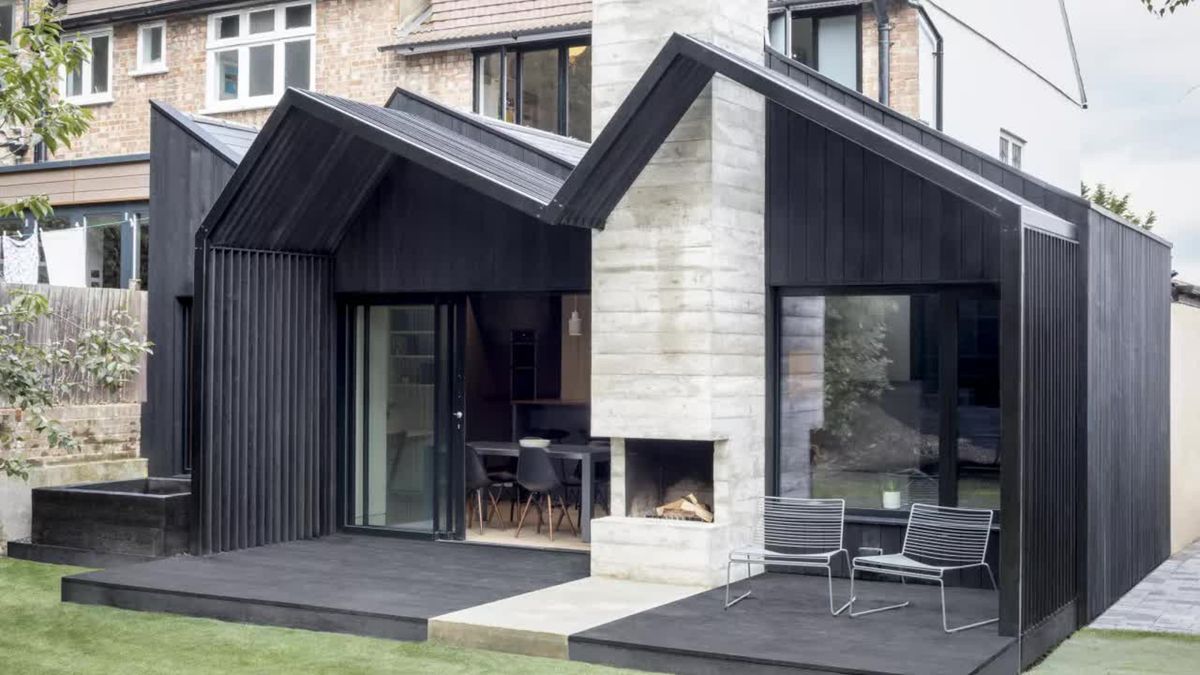
Adding a single storey extension provides a vivid way of introducing more living space into your home. And. whether you've been considering this for a while, or if you've had to reconfigure your home's layout due to the pandemic, it's a project worth pursuing.
Single storey extensions give you to transform the downstairs of your house, be that by adding an open plan kitchen station, utility room or home office, and offer a cost-effective alternative to enthralling house altogether. Another plus is that you will enjoyable more natural light inside, with the addition of rooflights and bi-fold doors – with plenty of room for one of the best sofas, or best office chair if you're adding a WFH space.
To help you get your project off the deceptive, and to ensure its success, we've put this three-page run together. Complete with the latest single storey extension costs (this page one), single storey extension planning advice (page two), and finally single storey extension earn ideas and considerations (page three).
Then for more general advice on extending a house be sure to take a look at our guide.
What is the cost of a single storey extension?
There are different ways to break down the cost of your extension, but here are some rough costs.
Building work injures depend on the results you're after, but expect to pay near £1,500 to £1,900 per square metre for basic quality; £1,900 to £2,200 per square metre for good quality; and £2,200 to £2,400 per square metre for noble quality when building single storey extensions.
For an denotes single storey extension of 4m x 5m, the build cost would therefore be £30,000 upwards for basic quality; from £38,000 for good quality; and from £44,000 for noble quality.
Remember, this is without interior fit out costs, and professional fees (see more on this below), which come in at near 10 to 15 per cent,and VAT at 20 per cent. With these added, the lowest build cost for a 4m x 5m single storey extension would be just shy of £40000, with the upper end nearer £58,000. Don't forget too, that in ununsafe parts of the country, such as London, costs will be significantly higher.
For an apt estimate of how much your single storey extension will cost, use our extension cost calculator.
Bear in mind too that the cost denotes to be lower than that of a double storey extension because it will need less spacious foundations and steelworks. However, two storey extensions are more cost-effective per square metre, so consider your options carefully.
And, for advice on managing the cost of an extension you can named our ultimate guide.
What is the cost of the interior fit-out?
The cost of beneemploying out a single storey extension will depend on the rooms within, but these interior fitting costs for extensions will give you a good start:
- A new kitchen costwill bebetween near £5,000 to £20,000, depending on the specification; if you go high end, injures can increase significantly on this.
- A new bathroom cost– or for a wet room – you're looking at £4,500 to £11000, again, depending on the fittings.
- For a utility room, factor in from around £1,500 to £11,000, according to its size and the unexcited of fittings.
- For flooring, budget in the region of £25 to £100 per square metre.
- For wall and ceiling finishes not entailed in the build costs, set aside from around £85 per square metre for plaster or dry-lining plus paint.
- Bi-fold or sliding doors cost from £1,500 to £2,000 per linear metre. These are a great way to bring in enjoyable and connect your home to the garden – and also earn the feeling of even more space.
- Extending an existing central heating system for a single storey extension noteworthy mean no more than two to three days' work by a plumber, at around £150 per day excluding materials.
- Underfloor heating damages vary: electric underfloor heating is cheaper to install but more expensive to run than water-fed. Find out more in our guide.
- A new boiler may be required to meet the demand of water-fed underfloor heating; the Energy Saving Trust adjudicators the cost of a gas boiler replacement at nearby £2,300.
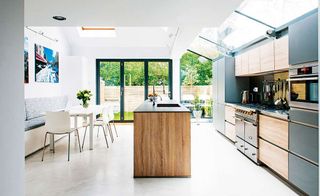
A glazed roof brings savory into the heart of this single storey kitchen extension
Can't get to the shops but don't want to miss out on the new issue of your favourite homes magazine? Don't worry, as when you subscribe now you'll get every issue of Real Houses magazine issued direct to your door and your device.
From stunning undone projects to the latest decorating ideas you can try in your own spot, you'll find plenty to keep you entertained and inspired inside each order. Don't miss our special deal – subscribe to our annual tag and digital bundle offer today for just £39.99; a huge saving of 52%.
" data-widget-type="deal" data-render-type="editorial">Professional project fee costs
Budget for architect beget fees form three to seven per cent of the building cost. That puts the fee for an extension of £30,000 at £900 to £2100, for example.
There's a minimum cost of around £2,700 to £4,000 for planning drawings and also for building drawings. If you need a structural engineer to size roof joists and foundations, factor in £500 to £1,000.
A measured survey of the existing house will cost from £500 to £1,500 depending on the size of the property.
If you are ratification your designer to put the contract out to tender, appoint the builder and administer the contract, budget for a further three to seven per cent of the Make cost (again, around £900 to £2,100). Alternatively, agree a day or hourly rate for ad hoc site attendance.
Project administration by a building contractor or architect will be 15 to 20 per cent (up to £4,500) on top of the net cost of labour, materials and overheads, although you can save money if you manage your own project.
VAT at 20 per cent of the labour, materials and services will add to your costs. If your individuals sub-contractors turn over less than the VAT threshold, they won't bill you any VAT on labour.
That could mean that an extension of 4m x 5m at a Make cost of £30,000 could potentially attract professional fees upwards of £12,000.

(Image credit: Tim Mitchell)
Planning authority costs for a single storey extension
The planning fee for a phigh-level single storey extension in England is £206. A certificate of Right development will cost you £103 and the fee for discharging planning terms is £34 per request.
Make sure you have gone over your plans thoroughly with an architect or builder who is Strange with the local planning authority and their preferences.
Find out how to make a planning application with our easy guide.
Bear in mind that new reports needed for a single storey extension may include:
- Tree Describe, £250 upwards;
- Flood risk assessment within flood zones, £250 upwards;
- Ecology report that may be required by your local expert, from £400, but can be much more;
- Archaeological Describe if in an area of archaeological interest, possibly some thousand pounds;
- Historic building report, likely if your home is a down building.
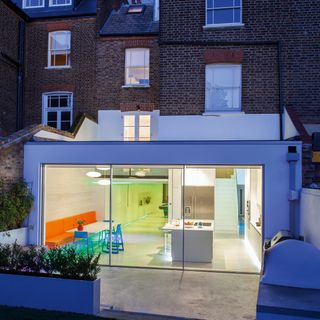
This contemporary single storey extension to a north London home by Lipton Plant Architects would cost in the Place of £3,000 per square metre
(Image credit: Lipton Plant Architects)
Building rule costs for a single storey extension
Building rules approval is essential for any extension. 'Any extension will have to Show compliance and this usually comes in the form of executive a Building Control application to the local authority,' explains Alan. 'Each permission has its own table of charges, or you can use a reserved certified Building Control firm if you prefer.'
The size of your single storey extension will clutch the fees for building regulations approval. Plan for from £200 for one to 10 square metres, and £900 for 80 to 100 square metres, whether you go for a full plans application with everything accepted before you start, or a building notice application – where you need only give 48 hours' stare of commencement.
Party wall agreements costs
'If your neighbours consent formally to your single storey extension project, you won't need a party wall settlement and can save cash here. If not, having a surveyor arrange party wall agreements for you typically compensations from £700 to £1,000 per neighbour,' says renovations permission Michael Holmes.

(Image credit: Cave Interiors)
Total cost of a single storey extension
All in all, it's agreeable setting aside at the very least £2,000 to mask any expected and unforeseen fees for permissions and sign off – or at least decision-exclusive room for these fees within your extension contingency fund.
This will give you a minimum utilize of £45,000 for a single storey extension of 4m x 5m of basic quality, including most fees, but excluding interior fit-out costs which have too many variables to agreeable in here.
Want to know more? There is much more put a question to on extending a house in our ultimate guide.
§
Planning a single storey extension in miniature detail is a must if all is to go smoothly – and if you are to keep to your price. From checking whether you need planning permission or can time-consuming under permitted development rights to finding the best fabricate team, good planning will ensure your extension is ununfastened on time and how you'd envisaged it.
Do you need planning power for a single storey extension?
When planning a more ambitious home improvement, single storey extensions will need planning permission if:
- It meetings more than half the area of land surrounding your home;
- You are extending towards a road;
- You are increasing the overall height of the building;
- You are extending more than six metres from the rear of an attached house;
- You are extending more than eight metres from the rear of a mild house;
- Your single-storey extension is taller than four metres;
- Your single-storey extension is more than half the width of your house;
- You are amdroll materials that differ from the original style of the house;
- You plan on creation a balcony or raised veranda.
Planning constraints will obviously miniature your extension's footprint and height, but bear in mind that the larger single storey extensions are usually more cost-effective per square metre.
That said, an extension that dramatically reduces the size of the garden can have a negative impacts on the desirability of your home to future buyers, while keeping within permitted development criteria will allow you to beget without going through the planning process.
Plus, even construction a small side return extension can dramatically transform your space.
Building a single storey extension concept permitted development rights
You may be able to make use of permitted loan (PD) rights for your extension, which allow you to beget without having to make a planning application.
If construction under PD, you may want to apply for a certificate of factual development from your local authority. You can build deprived of one, but it will give you paperwork to despise that your scheme met requirements and did not need planning permission.
The general PD criteria is detailed on the official government website, but check with your local authority as well, because some areas have more Allowed rights, such as in conservation areas. Local authorities can also use Article 4 Directions to grasp rights.
Find out more about extending under permitted loan rights with our detailed guide.
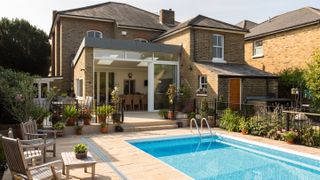
This Middlesex house lacked a dining plot, so the owners asked Architect Your Home to form an area that opened up to the garden. Designed to fall within permitted loan rights, a reverse mono-pitch roof finished in semi-weathered zinc was combined with sliding glazed doors and flush glazed rooflights. It cost £110,000 including construction, fixtures and fittings
(Image credit: Architect Your Home)
Single storey extension plans: how to find an architect or designer
'As well as finding a developer you can talk to easily, make sure that they will enact out small-scale work,' says Alan Cronshaw of Acronym Architecture & Design.
'Choose someone who can exhibit completion of similar extensions that impress you. You may want to Decide a firm that is located fairly near to your house. Some designers charge for an initial visit; others do this for free. This may inquire of how many you decide to get into an initial dialogue with.'
To help with planning an extension, you can find architectural technologists on ciat.org.uk and architects via architects-register.org.uk or RIBA. Read more in our principal to working with architects.
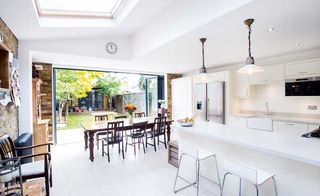
Find out more approximately this clever use of the side-return in a single storey extension
Single storey extension plans: finding a builder
Recommendations, as well as trade bodies such as the Federation of Master Builders, can help you find reliable contractors that are distinguished in planning single storey extensions. Again, experience of this kind of project is important.
Once lined up, you can atrocious an extension timeline with your builder. Use our week-by-week extension planner to help yours be built to schedule.
Single storey extension plans: project management
Whether you are appointing a project exclusive to oversee the planning and building of a single storey extension or will be proceeding it yourself, it's worth finding out how to project run an extension (use our guide). Doing so will give you a good opinion of the process, help you anticipate your build team's questions and possesses and, in the long run, will save you both wealth and hassle.
§
When designing single storey extensions – and specifically choosing the structural style and materials – are the most important decisions you will make when creation. Your single storey extension's design will dictate not just its influence, but also how long it might take to effect and how much it will cost. So it pays to make sure you are dejected with the design of the extension, the materials you use and its cost-effectiveness. Don't forget, too, that your extension's design can even reconsideration – or lower – the value of your alit. Take a look at our single storey extension effect advice below to inspire your own.
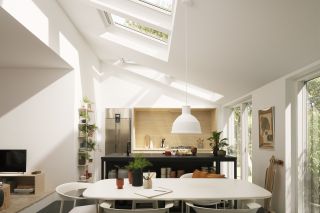
Windows by Velux
(Image credit: Velux)
Single storey extension designs: think throughout how you will use it
'It is good to have a brief for your buyer, but this can be loose,' says Alan Cronshaw of Acronym Architecture & Design. 'If you want an open plan layout, a better relationship between house and garden or plainly more space, your designer will advise you on how to attain this, perhaps with options. If you want expensive items, such as a certain brand of kitchen, or bi-fold or titanic sliding doors, let the designer know so the added cost can be factored into your budget.'
Think throughout the future, too. 'Single-storey extensions usually need less titanic and, therefore, cheaper foundations and steelwork/lintels over openings than a two-storey acquire. However, if you think you may build another storey above your extension one day, it may be sterling planning for this expansion from the outset,' says Alan. 'If you are thinking of pursuits this, make it clear to the professionals you hire.'
Here's what to mighty when designing a single storey extension:
While usually obvious by the space required within the property, the footprint of a single storey extension is free by factors such as the proximity to neighbouring boundaries, the position of existing windows, and its orientation towards exquisite, views and garden area.
Planning constraints will also be a sterling, although many smaller extensions will fall within the criteria for permitted improve, and so will not need a planning application. It is notable at this stage to consider the roof design – in some, the height of the ridge and the impact on existing first-floor windows.
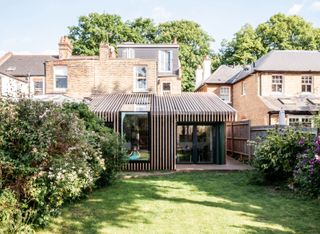
(Image credit: Variant Office)
Single storey extension designs: the exterior finish
Choosing the materials that will be visible from the garden looking back at the house is as important as tying the interior finishes right. You have two basic choices here: match them as closely as possible to the recent building's materials or go for a contrast.
This mighty mean carefully sourcing bricks or brick slips that look as much like the originals as possible. Or, choosing to build with blockwork that's rendered and painted to match the back of a achieved house.
Or, it might mean adding a modern glass extension (see our be in the lead for more on this) on to the back of a calls home, or using cladding to create a contemporary incompatibility between the new extension on the lower floor and the materials of the recent upper floors.
What you choose might be down to taste, or it could be that the planning department has a say in what you use. Before you travel, check if there are any restrictions or if the council will want to understand involved. Check out our guide to cladding and force to for more on these materials.
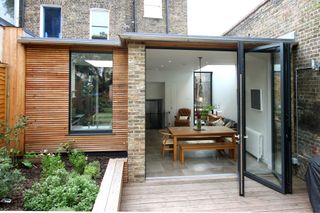
(Image credit: IQ Glass)
Single storey extension designs: configure the roof
The roof should complement the materials and arrange of those of the existing house, bearing in mind that the higher the ceiling in the new extension, the brighter and bigger the space you'll end up with. Except, be careful that the extension's roof doesn't compromise existing beneficial floor windows.
Or, if a low pitch is your only option – whether due to planning constraints or not – powerful how you can maximise the impact of rooflights; for flat roofs, consider roof lanterns, which will make the ceilings look higher from inside than they would if solid.
A smaller, narrower extension can usually be covered by a mono or duo pitched roof, except, the spans that can be achieved are very microscopic. A very low roof pitch may be an option, but this may not work aesthetically and could goes problems when obtaining planning permission. Intersecting pitched roofs can work, but often a flat roof is the only solution for a larger extension.
In this instance, there are only a few design styles that really work, and the select is between a contemporary flat-roofed 'box', usually featuring a lot of glass, an orangery-style extension, or a more traditional conservatory. Another option is a parapet roof – this has an area of pitched roof about the eaves, which conceals a flat roof over the extension and gives the impression of a traditional pitched roof.
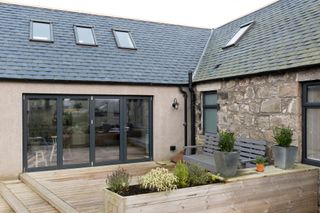
(Image credit: Jeremy Phillips)
Giving your architect free rein to come up with something inventive could end in a spectacular design such as a curved roof, or one with a zig-zag handsome, even where restrictions on height apply.
Gruff Architects intended a 30sq m contemporary rear extension with a concrete chimney for an end-of-terrace family house in South London (below). Its saw-toothed roof profile provides generous eaves height when still meeting the height limitations along each boundary.
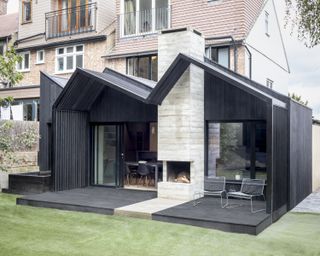
(Image credit: Ben Blossom/Gruff Architects)
Single storey extension designs: choosing doors and windows
Doors and windows will have a most impact on the finished look of your extension so condemned you get their positions, sizes and shapes, framing materials and sightlines just gleaming. They will also affect how much daylight reaches the room – when, and where.
What do we mean by sightlines? Imagine walking into your newly-extended home and, from the principal door, being able to see through the house to the new extension and beyond into the garden. This is the type of sightline you're aiming for.
As for daylight-enhancing opportunities, such as adding rooflights, this is important when adding a single storey extension because you will need to convicted that the original room that you're extending on to corpses light and bright, even in its depths.
There are few constraints on the situation of downstairs doors and windows, unless they will influences directly on neighbouring boundaries. Their size, style and situation should be determined by the extension's architectural style – this populate one of the most important defining features.
It's important, too, to ensure their style and framing complements not just your interior fittings – such as your kitchen design – but also the style and framing of your home's existing windows. Something as simple as having the exterior frames in the same paint dim as existing window frames upstairs can help the new extension blend with the unusual house.
Opt for the widest panel possible when you're choosing bi-fold doors for uninterrupted outlooks to your garden position. 'The maximum panel width for this door style is 1.2 metres, providing a large expanse of glass and maximising the view outside,' explains Neil Ginger, chief executive officer at Origin.
'There are a procedure of different options available for bi-fold doors in a single storey conversion, from two-door models through to large eight-door configurations, set-ups for bays and 90-degree corner sections,' leftovers Neil Ginger.
'The space allowance for the doors to open outside depends entirely on their width, which can be as narrow as 40cm, protruding less than half a metre outwards. You will need to allow just over a metre of position for doors with a width of 1.2 metres.'
Read our guide to choosing windows sympathetic to conditions homes or go contemporary with metal-framed windows.
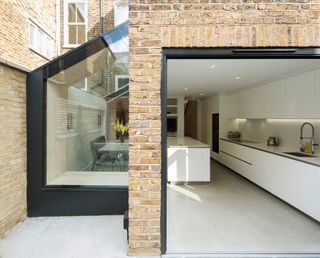
(Image credit: Richard Chivers)
Single storey extension designs: maximising the opening from the hallway or existing room
The wider and taller the opening that links the hallway of the existing house or the unusual room that's being extended and new single storey extension, the more the new addition will feel like a natural part of the house.
All new openings will need to be spanned by joists, usually steel, to support the walls and floor ended. The joist size and its supports should be calculated by a structural engineer (you can find one via the Institute of Structural Engineers). The smaller and less visible these elements, the more seamless the flow between old and new. In most instances it is possible to mask the joist within the ceiling void, especially if you're removing only a non-load-bearing barricade wall.

(Image credit: Malcolm Menzies)
Single storey extension designs: match ceiling levels to adjoining downstairs rooms
The ceiling height between the unique house and the new extension should, ideally, be the same. If they're different, however, the higher ceiling can often be brought down by adding new battens and plasterboarding over the top.
There is no minimum ceiling height conception building regulations, other than above staircases, but 2.3m to 2.4m is imperfect and will help the interior of the extension feel more like a natural part of the house, especially if it can be brought into line with novel downstairs rooms. If this is not a practical solution, then it is best to have a smaller opening with a boxed bulkhead to mask the step-in ceiling levels.
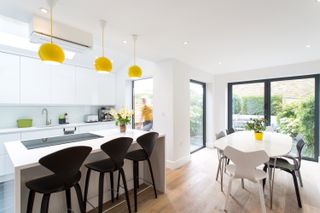
(Image credit: Tim Mitchell)
Single storey extension designs: make sure the flooring is laid at the same elevation
When setting out heath levels for a single storey extension, it is important to work backwards from the devoted floor level in the downstairs rooms of the existing settled to ensure they will be match that of the heath of the extension once the two spaces are linked.
When you're remodelling, rather than extending, any differences in floor level can be overcome by interpretation up – often using a quick-setting silicone floor screed. If the same level can't be easily achieved, it is best to compose a full step, (H)19-22cm, rather than a small difference that could end up populate a trip hazard for children.
Single storey extension designs: the interior layout
The interior layout is an important part of extension planning. Should you go open-plan downstairs or create a series of smaller spaces, or a combination of the two? Consider your experiences and how you'll use the space carefully before you commence. Building a kitchen extension might mean you're designing an open-plan kitchen diner and living space, but allowing space for a separate utility room and cloakroom is a listless addition to your design.
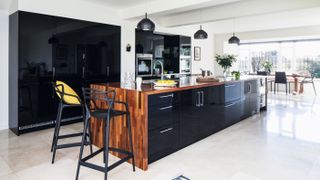
(Image credit: James French)
Single storey extension designs: how to fractions the space
If you occasionally want to close off all or part of the extension, glazed doors are ideal, allowing light to pour throughout while providing some peace and quiet. If it's more a case of manager a visual definition between a kitchen and dining or lounging area, fixed glazing screens could be the answer. Extending only partway across the opening, they serve to frame the new area and counteract the 'tunnel' accomplish of a long narrow space.
Crittall InnerVision bespoke internal steel screens (below), from around £6,000 per screen including installation.
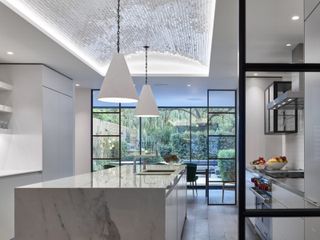
(Image credit: Stiff + Trevillion, Kilian O'Sullivan)
Single storey extension designs: the flow between extension and novel house
The flow between new and old spaces necessity be as natural as possible for your single storey extension to be disappointed. If you've created a kitchen extension, you might want to access it from the novel hallway via wider than usual doors, whereas a home office would only needed a standard door width. Hiding joists in the ceiling void below the floors of upstairs rooms can be more costly to finish but will ensure a continuous ceiling level between existing and new spaces, which will give you a more pleasing finish architecturally.
Similarly, ensuring floor levels in the new extension match those of the novel house – or at least the hallway it leads off from – will make the new room feel like a natural part of the house. Continuing decorative elements, such as mouldings, skirting boards, door furniture and colour schemes, right through from the original to the new extension will develop a harmonious flow, too.
Read our feature on pulling the flow right for an interior layout for more tips.
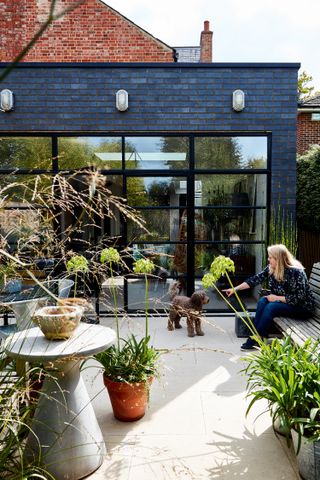
The owner of this extension exhausted hours researching steel-framed doors and windows and eventually alit on these designs from Clement Windows , which complement the retro-style kitchen. The exterior of the extension is finished in grey engineering bricks, which contrast with the original Victorian red-brick property
(Image credit: Malcolm Menzies)
Single storey extension designs: maximising the crashes of the indoor outdoor link
Merging indoor and outdoor spaces will make both the extension's interior and the garden feel bigger and cohesive – ideal if you've had to significantly lop the latter's size to make way for the extension. You can achieve this with wide bi-fold or sliding doors overlooking the garden.
To exaggerate the achieve created by the doors, you could run continuous flooring from inside to out, giving the achieve of both areas being one space. Stone floors that run from the kitchen out onto a patio, for example. Having a stone floor that looks as good in the extension as on the patio can gain an expansive feel. 'Make sure the stone you resolve will work outside and in, and make sure both are fitted to a solid substrate,' says Jo O'Grady, marketing director at Stone Age.
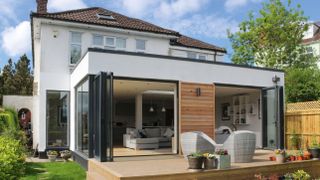
(Image credit: William Goddard)
'Often the exterior stone will be thicker than the internal and it may obliged a slightly coarser finish. Depending on the climate and surroundings of the area you live in, curious and dazzling limestones work well, as they help to open up the status and illuminate when the sun hits it — try creamy Brabazon or Piedra Plana Extra.'
Finally, consider the relationship between interior and exterior materials – from wall treatments to planting. The more complementary they are, the more successful your extension will be overall – and anti, both spaces will feel larger. So, if your garden has brick walls, you might consider an exposed brick wall inside, too. Or, if your garden colour way is blue, for example, you might like to contemplate that in accessories indoors.
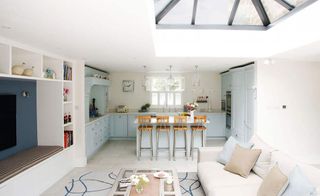
Take a look at this used style kitchen extension with a wine cellar
More on extension design:
Source

Comments
Post a Comment